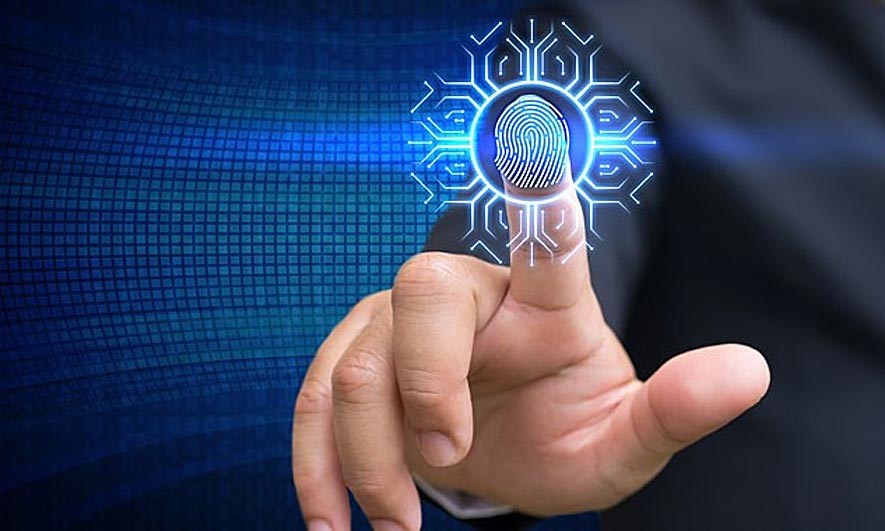Biometric authentication uses the unique features and characteristics of individuals to identify and verify a person’s identity. There are several different types used in business today, but the options listed below are the most common and budget-friendly.
The future of business is password-less, so take some time to learn about and analyze each method below to find out which one will work best for your particular workplace.
Fingerprint Scanning
Fingerprint scanning is something most people have seen or at least heard of, thanks to shows like CSI. Since every fingerprint is unique, fingerprint scanners are an excellent basis for any biometric time clock.
The advantages of implementing fingerprint scanning in the workplace are that employees don’t have to remember complicated passwords or access codes, and the equipment is extremely affordable.
Unfortunately, it’s not impossible to hack some fingerprint scanners, allowing people to clock in or gain access using an image of someone else’s fingerprint. Furthermore, should an employee sustain a temporary or permanent injury to their hand, the scanner might not be able to read their prints accurately. Thankfully, high-quality scanners are able to surmount these issues, especially if they’re equipped for multi-factor authentication using any of the biometric technologies listed below.
Facial Recognition
Facial recognition is also widely used in the workplace. For this method, an image of the person’s face is stored in the system and called upon anytime that person needs to log in or authenticate their identity. Again, facial recognition does away with passwords and keycards, and it’s extremely effective when combined with other biometric methods.
The downside to facial recognition is that lighting changes or different facial expressions can impede the system’s ability to recognize facial features. Also, piercings or other facial adornments can make it difficult for the system to identify someone’s face.
Voice Recognition
Your voice is as unique to you as your fingerprint or facial features, and since most business is conducted, at least in part, by phone or video, authenticating via voice recognition just makes sense. Further, talking on the phone is second nature for most people, so this type of authentication doesn’t require much training to use.
Although voice recognition is a great option for business owners who want added security, loud or busy background noise or severe respiratory problems can make it a challenge for some users.
Read here : Cloud VS Desktop payroll software
Iris Scanning
Iris scanning is one of the most accurate biometric authentication methods known today. The concept of iris scanning has been around since 1936, but it wasn’t put into use until the early 1990s.
Since iris recognition is still relatively new, it is less common than the other methods on this list. With that said, it offers one of the highest levels of security here. Unfortunately, low light conditions can make it difficult for the iris scanner to properly read the iris in front of it.
Signature Recognition
For low-level security needs, signature recognition makes things run smoothly. For example, in businesses where signatures are used to approve documents –such as banks or judicial systems – touch-screen signature authentication is perfect.
Since signatures have been used for years to approve and authenticate, most people trust the measure and are willing to comply. Despite the pros, signature authentication can be tricky because most people’s signatures are inconsistent.
As you can see, there are plenty of biometric authentication methods you can apply in your business. Each one has pros and cons you must consider and compare. However, the one thing you can be sure of is that the future of business is passwordless. So do some research, and consider implementing biometric authentication in your workplace today.




